Tangerine Dream
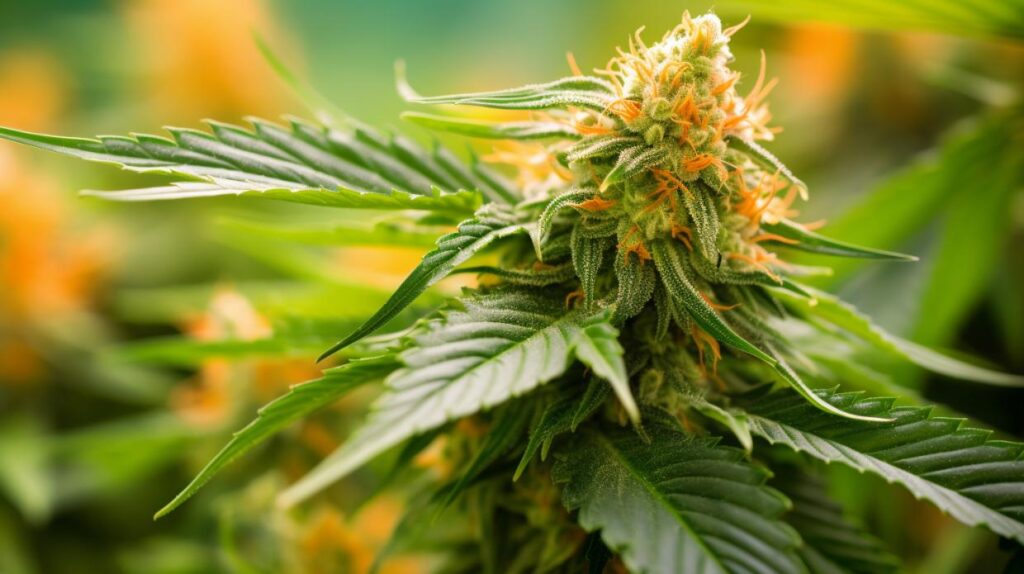
The Tangerine Dream strain, with its sativa-dominant pedigree, offers a compelling study in the dynamic interplay of genetics, chemistry, and the sensory experience within the realm of cannabis cultivation and consumption.
This hybrid, resulting from the meticulous crossing of G13, Afghani, and Nevilles A5 Haze, not only stands out for its distinctive citrusy aroma but also for its potent effects that have garnered acclaim, notably its victory at the Cannabis Cup in 2012.
With a THC content that reaches upwards of 25%, it presents an intriguing paradox of uplifting euphoria coupled with potential therapeutic benefits, particularly in the alleviation of stress, pain, and depression. Yet, its potency comes with common side effects such as dry mouth and eyes, underscoring the importance of understanding its comprehensive profile.
As we explore the genetic lineage, terpene profile, and the array of effects and medical uses, alongside comparisons with similar strains and insights from research and studies, the Tangerine Dream strain invites a closer examination of its celebrated status and the nuances that contribute to its unique position in the cannabis connoisseur’s collection.
Genetic Lineage
The genetic lineage of Tangerine Dream is a meticulously crafted hybrid, comprising G13, Afghani, and Nevilles A5 Haze, which collectively forge a 50% Sativa and 50% Indica composition, underpinning its multifaceted effects and distinctive citrus flavor profile.
This balanced genetic structure is pivotal in delivering the award-winning qualities of Tangerine Dream, celebrated for its exceptional performance in the Best Sativa category at the 2010 High Times Cannabis Cup. Particularly, the inclusion of Nevilles A5 Haze in its genetic makeup introduces a complex terpene profile that is responsible for its unique aroma and flavor, setting it apart from other strains with a mere citrus undertone.
Nevilles A5 Haze, a renowned Sativa dominant strain, contributes significantly to the cerebral and uplifting effects experienced by Tangerine Dream users. This genetic contribution complements the relaxing and soothing properties inherited from the G13 and Afghani strains, ensuring a well-rounded experience.
This strategic genetic amalgamation results in an average THC content of around 20%, offering a potent, yet balanced effect profile that caters to both recreational and medicinal users, promoting euphoria, creativity, and relaxation.
THC/CBD Content
Building upon its unique genetic lineage, Tangerine Dream distinguishes itself further through its notable THC and CBD content, essential for understanding its profound effects on users. Cultivated by Barneys Farm, this hybrid strain boasts a THC content of 25%, positioning it among the higher potency categories in the cannabis market. In contrast, its CBD content stands at a modest 1.8%, reflecting a composition tailored more towards recreational use than specific therapeutic outcomes.
The Tangerine Dream strain offers a deeply relaxing yet cerebral high, attributed to its substantial THC level. This high THC content is responsible for the strain’s euphoric and energizing effects, making it a popular choice for users seeking to relieve stress or enjoy a sweet citrus adventure. However, given its potency, individuals seeking medical advice or new to cannabis may need to approach this strain with caution.
While the CBD presence in Tangerine Dream is relatively low, it does not detract from the strain’s acclaim, having secured its position in the cannabis world by winning the Cannabis Cup. This acknowledgment underscores its quality and the deeply relaxing experiences it offers, making it a significant contender among new strains with varying flowering times and cannabinoid profiles.
Terpene Profile
Delving into the terpene profile of Tangerine Dream reveals a complex blend of Myrcene, Limonene, and Caryophyllene, each contributing uniquely to the strain’s distinctive citrusy and tangy flavor profile. Originating from the renowned breeders at Barneys Farm, Tangerine Dream has been meticulously developed to offer not only a profound sensory experience but also a well-rounded set of potential therapeutic benefits.
Myrcene, the most abundant terpene in this strain, imparts an earthy and musky aroma reminiscent of its counterparts found in hops, lemongrass, and mango, adding a depth to the strain’s overall olfactory experience. This terpene is celebrated for its sedative qualities and its ability to enhance the effects of THC, potentially increasing the strain’s efficacy in providing relaxation.
Limonene, as the name suggests, infuses Tangerine Dream with its vibrant citrus notes, drawing parallels to the fresh zest of oranges and lemons. Beyond its invigorating scent, Limonene is associated with mood elevation and stress relief, complementing the strain’s ability to uplift the consumer’s spirits.
Lastly, Caryophyllene introduces a spicy and peppery layer to the strain’s profile, contributing complexity to its flavor and aroma. Found in spices like black pepper, cloves, and cinnamon, Caryophyllene is unique for its ability to interact with the body’s CB2 receptors, suggesting potential anti-inflammatory and analgesic properties.
Understanding the terpene profile of Tangerine Dream, as cultivated by Barneys Farm, allows users to fully appreciate the intricacies of its flavor, aroma, and the synergistic effects these terpenes may offer.
Effects
After exploring the terpene profile of Tangerine Dream and its influence on aroma and potential therapeutic benefits, it is crucial to examine the strain’s effects on consumers. The effects of Tangerine Dream are multifaceted and can vary among individuals, yet several common experiences have been reported consistently. This analysis aims to provide a comprehensive understanding of its impact, focusing on both the positive sensations and potential risks associated with its consumption.
-
Energetic Feeling: Many users report a surge of energy, making this strain suitable for daytime use. The energetic effect can enhance productivity and creativity, offering a significant boost to those engaging in artistic projects or needing to complete tasks.
-
Uplifted Feeling: Tangerine Dream is known for its ability to elevate mood, inducing feelings of happiness and euphoria. This uplifting effect can be particularly beneficial for individuals dealing with stress or depression, offering temporary relief from negative thoughts and emotions.
-
Dry Mouth: Despite its positive effects, Tangerine Dream may lead to some discomforting side effects, including dry mouth. Consumers are advised to stay hydrated to mitigate this potential risk.
-
Dry Eyes: Another common side effect is dry eyes, which can cause irritation. Using eye drops can help alleviate this issue, ensuring a more comfortable experience.
Understanding these effects and potential risks is essential for consumers to make informed decisions about their use of Tangerine Dream.
Medical Uses
Tangerine Dream, recognized for its potent therapeutic effects, has emerged as a preferred choice among medical marijuana users seeking relief from stress, pain, and depression. With its unique blend of calming and energizing effects, this strain caters to a broad spectrum of medical conditions, offering a versatile solution for patients. Its higher THC potency is particularly noted for providing effective relief, underscoring the importance of consulting healthcare professionals before usage.
| Medical Use | Effectiveness | Potential Side Effects |
|---|---|---|
| Stress Relief | High | Dry mouth, Dry eyes |
| Pain Management | Moderate to High | Dizziness, Paranoia (rare) |
| Depression Alleviation | High | Heightened sensory perception |
| Mood Enhancement | Variable | Anxiety (in high doses) |
This table highlights the primary medical uses of Tangerine Dream and its effectiveness in treating these conditions. However, potential side effects, particularly when consumed in high doses, underscore the necessity for moderation and professional guidance. The strain’s versatility and therapeutic benefits make it a compelling option for medical users, emphasizing the importance of tailored, responsible use in achieving desired outcomes.
Flavor and Aroma
The aromatic profile of the Tangerine Dream strain is distinguished by its vibrant citrusy essence, encapsulating nuances of tangerine and other citrus fruits, further enriched by its primary terpenes: Myrcene, Limonene, and Caryophyllene. This combination not only contributes to the strain’s distinct aroma but also enhances its flavor profile, making it a favorite among those with specific taste preferences who seek a tangy and intense experience.
The flavor of Tangerine Dream is characterized by:
-
A pronounced sweet citrus taste that immediately captivates the palate, offering a refreshing and invigorating sensation.
-
Subtle earthy undertones that provide depth to the flavor profile, balancing the sweetness and adding complexity to each inhalation.
-
The presence of Myrcene, which may introduce a slight herbal note, contributing to the strain’s overall aromatic richness.
-
Limonene and Caryophyllene’s influence, amplifying the citrusy aspect and introducing a peppery kick, respectively, which can enhance the strain’s appeal to a broad spectrum of taste preferences.
This detailed and technical examination of Tangerine Dream’s flavor and aroma underscores its uniqueness and explains why it remains a popular choice for both recreational and medicinal users seeking a distinctive cannabis experience.
Appearance
Moving beyond its enticing flavor and aroma, Tangerine Dream’s appearance offers a visual feast that is as distinctive and appealing as its sensory profiles. The strain is characterized by its lightweight buds, which contribute to the plant’s overall airy and delicate structure. Despite this, Tangerine Dream plants exhibit robust growth, reaching around one meter in height and developing strong side branches that support its vibrant yields.
The appearance of Tangerine Dream’s buds can vary, with some growers and users reporting dense floral clusters, while others describe them as lightweight and airy. This variability does not detract from the strain’s visual appeal; instead, it adds a layer of intrigue and diversity to its presentation.
When handled, the buds release a sweet citrus aroma, reminiscent of tangerine, with undercurrents of wood and mint, enhancing the sensory experience. Moreover, upon squeezing, the intensity of the aroma escalates from moderate to high, revealing a more earthy undertone that complements its initial tangy and intense flavor profile.
Grow Information
For cultivators interested in Tangerine Dream, it’s essential to understand that this hybrid strain, with its balanced 50% Sativa and 50% Indica genetics, exhibits a high THC content of 25% and a CBD content of 1.8%, necessitating specific growing conditions to achieve optimal results. Given its unique genetic composition, including G13, Afghani, and Nevilles A5 Haze, and its celebrated status as the 2010 High Times Cannabis Cup winner in the Best Sativa category, attention to detail in the cultivation process is paramount.
To ensure successful cultivation, consider the following growing techniques:
-
Temperature Control: Maintain a germination temperature range between 70°F and 90°F. It’s crucial to avoid freezing temperatures, which can damage seeds. Store seeds in a cool, dark place when not in use.
-
Indoor vs. Outdoor Cultivation: Tangerine Dream thrives in both environments. Indoors, expect a flowering time of 65 days, while outdoor plants can yield up to 600g per plant.
-
Monitoring Seed Quality: Note that some growers have reported mixed results with Barneys Farm seeds. Consistently check seed quality to prevent issues with bud production.
-
Award-Winning Pedigree: Leverage the strain’s award-winning background as a marketing point for the end product, ensuring that cultivation efforts are aligned with the expectations of a top-tier strain.
Adverse Effects
While Tangerine Dream’s cultivation process outlined previously highlights the strain’s remarkable qualities and potential yields, it is equally important to acknowledge the possible adverse effects that consumers may face, such as dry mouth and eyes, dizziness, paranoia, and anxiety. These effects, while common across many cannabis strains, can detract from the user experience and may require intervention or preventive measures.
| Adverse Effect | Potential Treatments |
|---|---|
| Dry Mouth | Hydration, using saliva-promoting products |
| Dry Eyes | Artificial tears or eye drops |
| Dizziness | Resting in a comfortable position, hydration |
| Paranoia | Reducing dosage, seeking a strain with lower THC content |
| Anxiety | Deep breathing, CBD oil, seeking professional advice |
Understanding these adverse effects is crucial for both novice and experienced users alike. The potential treatments listed can mitigate the negative experiences, ensuring a more enjoyable and safer consumption of the Tangerine Dream strain. It’s essential to approach the use of this strain with awareness and caution, tailoring consumption practices to one’s personal tolerance and reaction to the strain.
Comparisons with Similar Strains
In evaluating the Tangerine Dream strain, it is crucial to compare its characteristics with those of similar strains, such as Super Lemon Haze and Tangie, to understand its unique position within the cannabis market. The comparison reveals a multifaceted profile that not only highlights Tangerine Dream’s distinctive attributes but also underscores its crossbreeding potential. This potential enriches the genetic diversity within the cannabis cultivation community, fostering the development of new strains that may inherit Tangerine Dream’s desirable traits.
-
Uplifting and Energizing Effects: Tangerine Dream shares its mood-enhancing and energizing qualities with Super Lemon Haze and Tangie, making it a preferred choice for consumers seeking daytime relief without lethargy.
-
Citrus Aroma and Flavor: Its aroma and flavor profile is closely aligned with that of Agent Orange and Orange Crush, featuring a pronounced citrus note that appeals to a broad audience.
-
Stress-Relieving and Creativity-Enhancing: Similar to Pineapple Express and Green Crack, Tangerine Dream offers benefits that include stress relief and the enhancement of creativity, catering to consumers looking to foster a productive mindset.
-
Potency and Growth Characteristics: The strain aligns with Lemon Meringue and Lemon Skunk in terms of THC content and shares growth characteristics and yields with Jack Herer and Orange Sherbet, indicating its robust nature and reliable cultivation performance.
Research and Studies
Several studies have underscored the therapeutic potential of the Tangerine Dream strain, particularly in areas concerning stress, pain, and depression management, showcasing promising outcomes. The research highlights its higher THC content, which contributes to its potent effects, beneficial for users seeking significant relief. Further investigations into Tangerine Dream’s genetic makeup, tracing back to G13, Afghani, and Nevilles A5 Haze, offer insights into its distinctive effects and aromatic profile. This lineage is pivotal to understanding the strain’s unique characteristics, including its citrusy flavor attributed to specific terpenes, which ongoing research aims to elucidate for their potential therapeutic benefits. Clinical trials and user surveys focusing on its impact on mood, creativity, and relaxation have generated valuable data for both medicinal and recreational contexts.
| Study Focus | Findings Summary | Potential Side Effects |
|---|---|---|
| Stress Management | Significant reduction in stress levels | Dry mouth, dry eyes |
| Pain Relief | Notable decrease in reported pain intensity | Dizziness, mild paranoia |
| Depression Alleviation | Improvement in mood and decrease in depressive symptoms | Anxiety, increased appetite |
| Aromatic Profile | Identification of key terpenes responsible for flavor | – |
| Genetic Background | Clarification of lineage and its contribution to effects | – |
This table emphasizes the multifaceted research approach towards understanding Tangerine Dream’s comprehensive effects and potential side effects, underscoring its therapeutic promise.
History and Origin
Tracing its roots back to a meticulous genetic blend, Tangerine Dream emerges as a sativa-dominant hybrid, ingeniously developed from the crossbreeding of G13, Afghani, and Nevilles A5 Haze strains to address specific medical needs. This highly regarded strain combines the robust genetics of its parent strains to offer a unique profile that has captivated the cannabis community, especially those seeking therapeutic benefits without the heavy sedative effects often associated with potent strains.
The development of Tangerine Dream was not just an effort in breeding for potency, but also a focus on enhancing the terpene profile to produce its signature citrusy aroma, which contributes to its uplifting and euphoric experience.
In addition to enhancing the terpene profile, the breeders also aimed at optimizing THC content to achieve a potent cerebral high, marked by a THC content of 25%, suited for alleviating various conditions including stress, pain, and anxiety.
Furthermore, the cultivation methods for Tangerine Dream were tailored to favor the genetic strengths of its ancestors, ensuring robust growth and high yield under controlled conditions.
Lastly, the breeders made it a priority to balance the sativa and indica effects of Tangerine Dream. This balance offers muscle relaxation and pain relief without the mental fog, making it an ideal choice for medical patients.
Through these targeted breeding and cultivation methods, Tangerine Dream has carved its niche as a therapeutic yet potent strain, offering a comprehensive solution for those seeking relief from a myriad of symptoms.
Frequently Asked Questions
Is Tangerine Dream an Indica or Sativa?
The question pertains to the genetic origins of a specific cannabis strain, focusing on its classification within the indica-sativa spectrum. Tangerine Dream, with its hybrid composition of 50% sativa and 50% indica, predominantly leans towards sativa.
Is Tangie Dream a Sativa or Indica?
The genetic background of Tangie Dream classifies it predominantly as a Sativa strain. This categorization is based on its inheritance, which promotes energetic and uplifting effects, aligning with typical Sativa-dominant characteristics in cannabis varieties.
Is Tangerine Strain Indica or Sativa?
The question pertains to the genetic origins of the Tangerine strain, specifically whether it is classified as indica or sativa. This strain leans towards sativa, offering uplifting and energetic effects suitable for daytime use.
Is Tangerine Dream Good for Anxiety?
Regarding the therapeutic potential of certain cannabis strains for anxiety, it’s important to consider their effects. Strains offering calming and energizing properties, along with mood-enhancing capabilities, may have significant utility in anxiety management.
Conclusion
In conclusion, the Tangerine Dream strain offers a potent THC content and a unique terpene profile that results in citrusy aromas. Its effects are predominantly uplifting and euphoric, making it suitable for alleviating symptoms of stress, pain, and depression.
Despite its beneficial uses, the strain is associated with minor adverse effects such as dry mouth and eyes. Its distinguished genetic lineage of G13, Afghani, and Nevilles A5 Haze contributes to its potency and unique characteristics.
The strain’s acclaim, highlighted by the Cannabis Cup win in 2012, underscores its significance in therapeutic and recreational contexts. Overall, the Tangerine Dream strain is a notable choice for those seeking a strain with strong effects and a pleasant aroma.

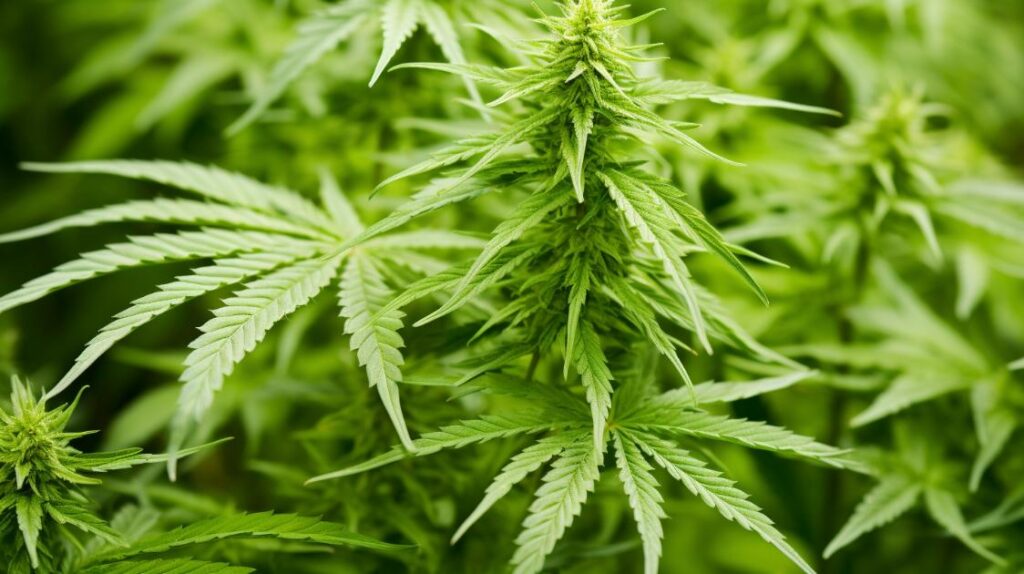
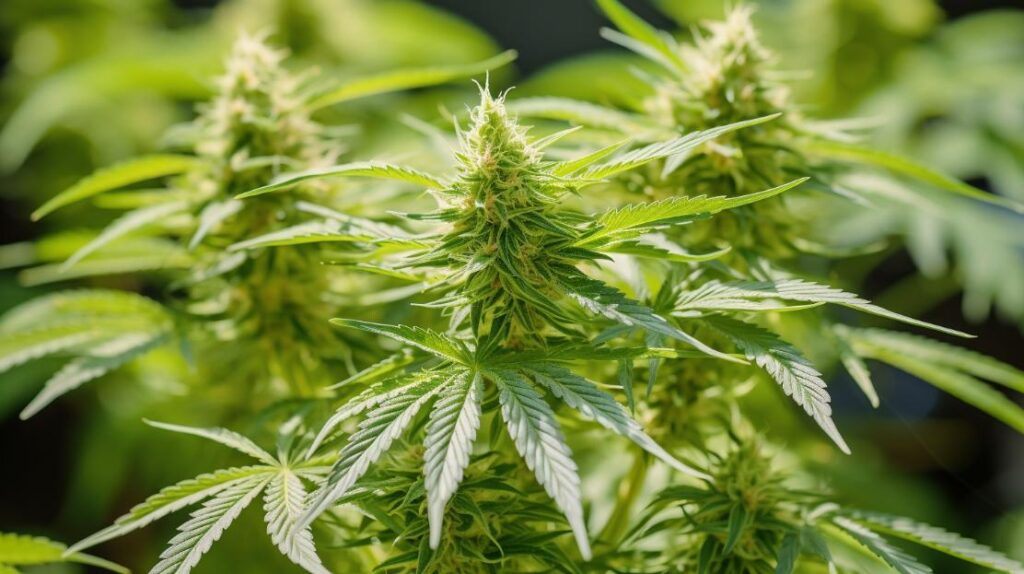
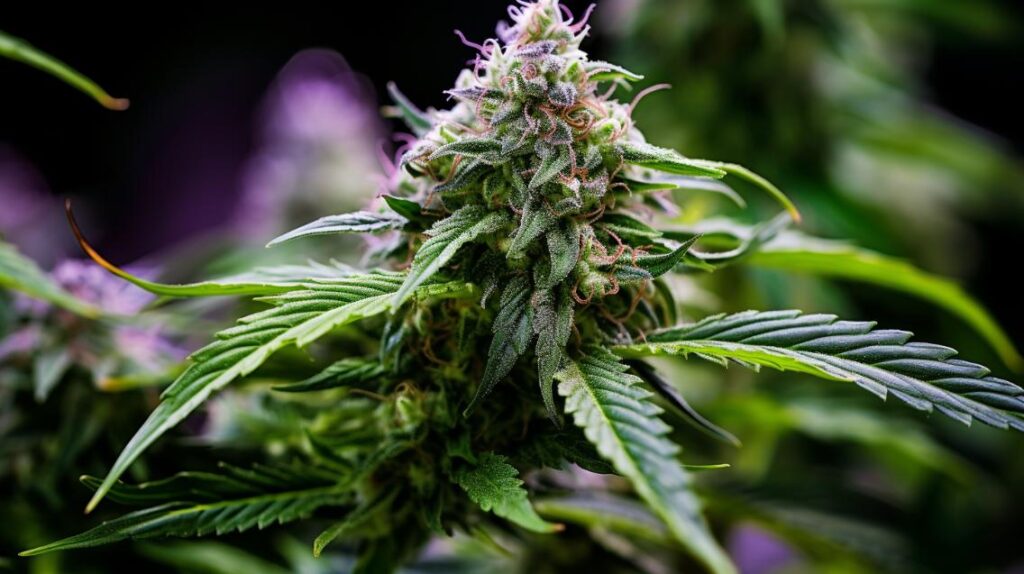
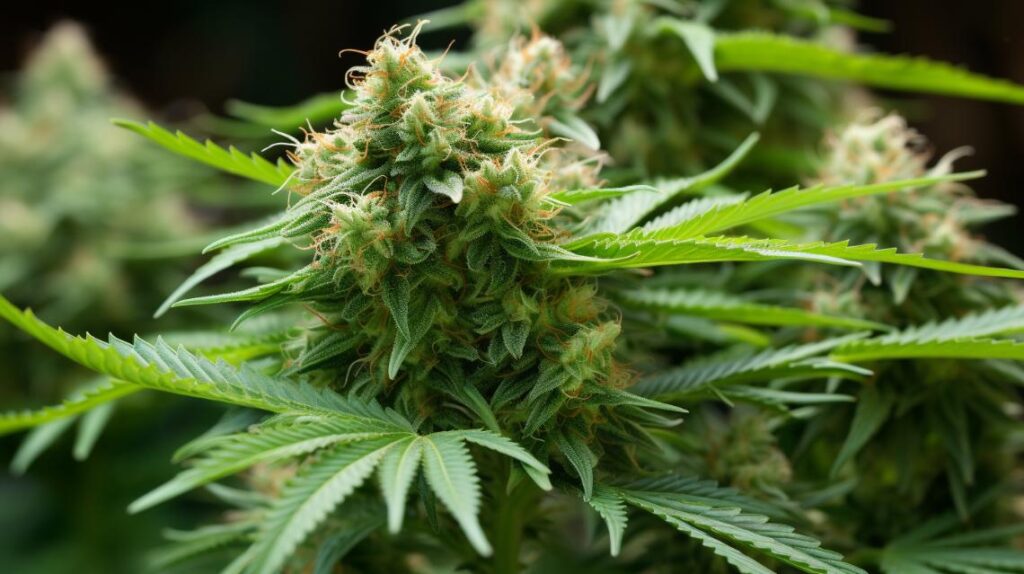
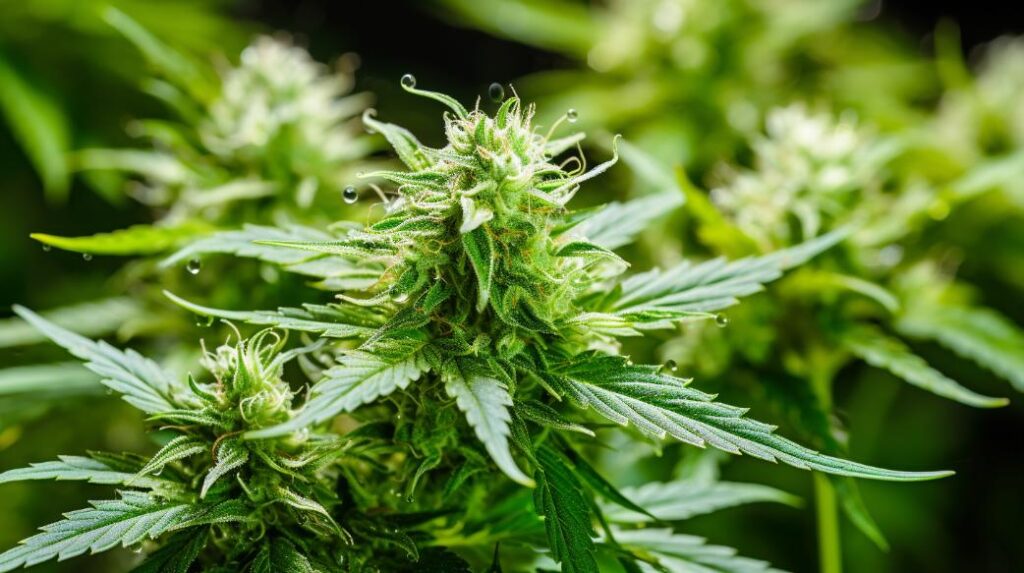

Responses